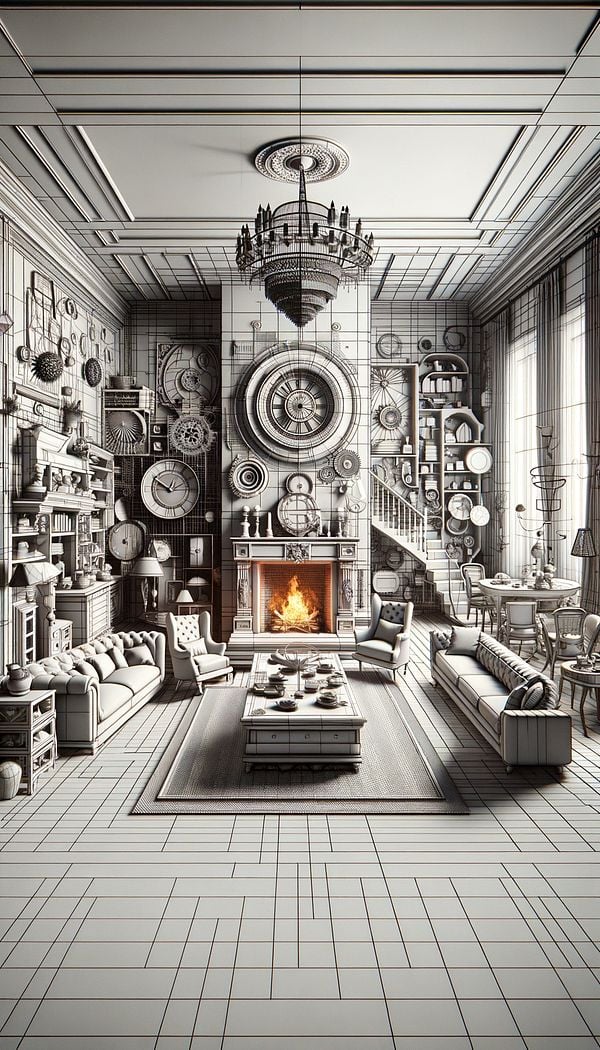What is Asymmetrical?
Asymmetrical refers to a design that is not symmetrical, exhibiting balance through differing elements.
Description
Asymmetrical design is a principle in interior design where balance is achieved not through mirror-like symmetry but through the variation of different elements such as color, form, texture, and space. In other words, rather than having identical elements on either side of a given point or line, asymmetrical design uses elements of varying visual weight to create interest and balance.
This approach allows for more freedom and creativity in design, as it does not restrict the designer to matching pairs or perfectly aligned compositions. Instead, it encourages the exploration of how different shapes, sizes, and colors can interact with one another to form a cohesive whole. When executed well, asymmetrical design can add a dynamic and contemporary feel to a space, making it visually intriguing and compelling.
In practice, achieving an asymmetrical balance can be more challenging than symmetrical design, as it requires a keen eye for scale, proportion, and composition. The designer must carefully consider how each element contributes to the overall balance of the space, ensuring that no single element overwhelms or underwhelms the composition.
Usage
A common example of asymmetrical design in interior spaces is the arrangement of art pieces of varying sizes on a single wall, where the visual weight is distributed unevenly yet harmoniously. In furniture layout, a large sofa might be balanced by a cluster of smaller chairs and a side table on the opposite side of the room, instead of an identical sofa.
FAQs
-
Is asymmetrical design only suitable for modern interiors?
No, asymmetrical design can be applied to any interior style. Its versatility allows it to fit well with modern, contemporary, traditional, or eclectic decor, depending on how it is implemented.
-
How can asymmetrical balance be achieved?
Achieving asymmetrical balance involves careful planning and a sense of harmony among different elements such as scale, color, texture, and shape. Designers often play with these elements until they find a visually satisfying arrangement that feels balanced.
-
Can asymmetrical design make a space feel unbalanced?
If not executed properly, asymmetrical design can indeed make a space feel off-balance. It requires a thoughtful arrangement of elements to ensure that the space feels stable and harmonious, rather than chaotic.
Practical Application
When applying asymmetrical design to your space, start by identifying a focal point and then arrange elements of different visual weights around it. Consider using a mix of large and small items, contrasting textures, and varying colors to create depth and interest. Balancing these disparate elements will bring a dynamic yet harmonious feel to your space.
-
Furniture Types599 articles
-
Lighting111 articles
-
Space Planning & Layout134 articles
-
Decorating Principles & Elements330 articles
-
Color & Patterns154 articles
-
Allyways PatternAlleyways Pattern refers to a specific visual motif inspired by the narrow passageways found between buildings, often featuring repetitive geometric lines or shapes evoking the sense of narrow, linear spaces.
-
Pull-Up LeatherPull-up leather is a type of leather known for its color-changing quality when stretched or pulled.
-
French PolishingFrench Polishing is a wood finishing technique that produces a very high gloss surface.
-
SoftwoodSoftwood is wood derived from coniferous trees.
-
Bird’s-EyeBird’s-Eye is a distinctive pattern found in maple wood.
